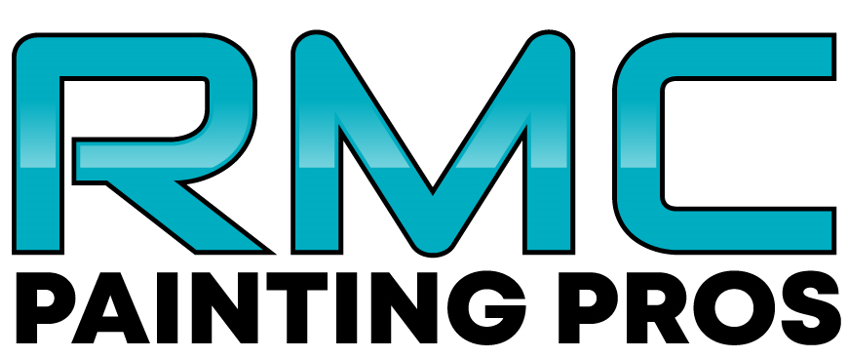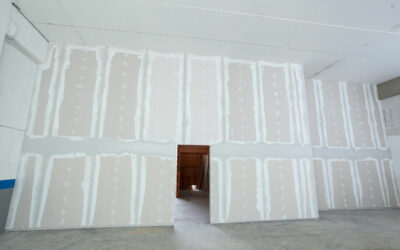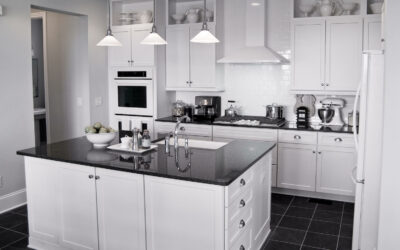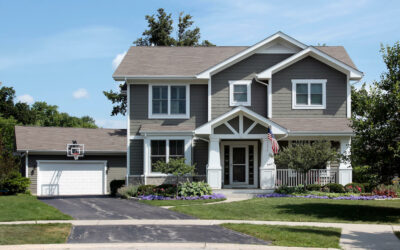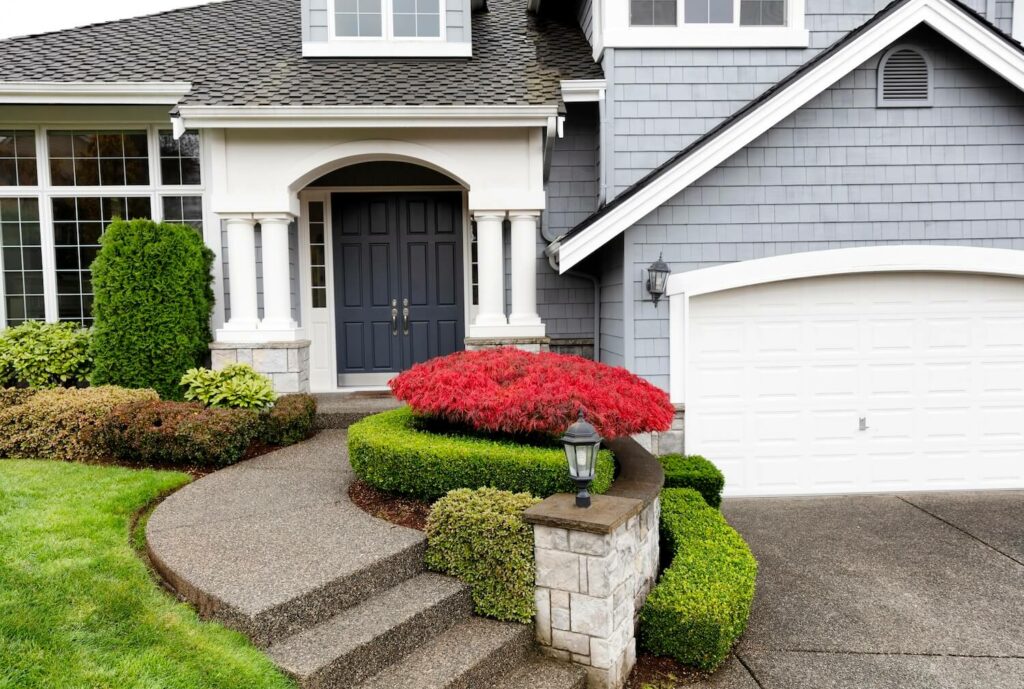
A fresh coat of exterior paint is more than a visual enhancement—it’s a crucial investment in the longevity and value of your home. Beyond simply refreshing the look of your property, high-quality exterior paint plays a significant role in protecting your home from environmental damage, preventing structural issues, and even improving energy efficiency.
This comprehensive guide will delve into the multifaceted benefits of exterior paint, offering insights and practical advice for homeowners seeking to maximize their investment.
The Protective Role of Exterior Paint
1. Guarding Against Weather Elements
Exterior paint serves as a primary defense against a variety of environmental factors. Here’s how it helps protect your home:
- Water Resistance: One of the most critical functions of exterior paint is to create a barrier that prevents water from penetrating the surfaces of your home. This protective layer is essential for preventing water-related issues such as wood rot, mold, and mildew. When paint begins to peel, crack, or wear off, it exposes the underlying materials to moisture, which can lead to significant damage and costly repairs if not addressed promptly.
- UV Protection: The sun’s ultraviolet (UV) rays can be harsh on exterior surfaces, causing paint to fade and degrade over time. Modern exterior paints are formulated with UV inhibitors that help protect against sun damage. These inhibitors ensure that your paint job retains its color and protective qualities for longer, preserving the aesthetic appeal of your home and maintaining its protective properties.
- Temperature Regulation: Paint also plays a role in regulating the temperature of your home. Certain paint formulations are designed to reflect heat, helping to keep your home cooler in the summer. This reduces the strain on your air conditioning system and can lead to lower energy bills. In cooler months, reflective paint can also contribute to better insulation, helping to maintain a comfortable indoor temperature.
2. Preventing Structural Damage
Exterior paint is crucial for maintaining the structural integrity of your home. Here’s a closer look at how it provides protection:
- Wood Siding Protection: For homes with wood siding, paint acts as a shield against moisture that can lead to wood rot. Wood is particularly susceptible to water damage, and when paint begins to fail, it exposes the wood to the elements. This can result in significant damage, including warping, swelling, and decay. Regularly maintaining your paint job helps to protect wood siding and extend its lifespan.
- Brick and Masonry Sealing: While brick and masonry are inherently durable, they still benefit from paint that seals their porous surfaces. Paint helps to prevent water penetration, which can lead to issues such as efflorescence (a white, powdery residue on the surface) and cracking. By sealing these materials, you can mitigate the risk of structural damage and maintain the integrity of your home.
- Metal Component Protection: Metal components such as gutters, downspouts, and railings are prone to rust and corrosion if not properly maintained. Exterior paint provides a protective coating that prevents rust formation and extends the lifespan of metal elements. Without paint, metal surfaces can deteriorate quickly, leading to costly replacements and repairs.
Enhancing Home Value and Aesthetic Appeal
1. Boosting Curb Appeal
A fresh coat of exterior paint can dramatically enhance the visual appeal of your home. This is particularly important for creating a positive first impression and improving overall market value. Here’s how:
- Color Choice: Selecting the right color can significantly impact your home’s appearance. Neutral or modern color palettes tend to have broader appeal and can make your home look updated and well-maintained. When choosing a color, consider the architectural style of your home, the surrounding landscape, and current design trends. A cohesive color scheme that complements the design elements of your home can enhance its curb appeal.
- Attention to Detail: Consistent paint application across all exterior surfaces contributes to a polished and cohesive appearance. This attention to detail can make your home stand out and convey a sense of care and maintenance. A well-painted home looks more inviting and can create a positive impression on visitors, potential buyers, and passersby.
2. Increasing Resale Value
Investing in fresh exterior paint can provide a substantial return on investment when it’s time to sell your home. Here’s how:
- Market Appeal: Homes with a well-maintained exterior are more likely to attract potential buyers and sell faster. A fresh coat of paint is a relatively low-cost improvement that can make a significant difference in how your home is perceived. Potential buyers are often drawn to homes that appear move-in ready and well-maintained, and a fresh paint job can contribute to this impression.
- Avoiding Major Repairs: Addressing minor issues with a new paint job can prevent the need for extensive repairs later. A home that appears well-maintained and free of significant issues can command a higher selling price and reduce the likelihood of negotiations or price reductions due to repair concerns. By investing in paint, you’re effectively preventing potential issues and enhancing your home’s marketability.
Choosing the Right Paint and Application
1. Selecting High-Quality Paint
The quality of paint you choose can greatly impact the durability and effectiveness of your professional exterior paint job. Here are key considerations:
- Type of Paint: Exterior paints generally come in two main types: latex (water-based) and oil-based. Latex paints are popular due to their ease of application, quick drying time, and lower environmental impact. They are also easier to clean up and are less likely to yellow over time. Oil-based paints, while less common, offer a durable finish and are ideal for high-traffic areas or surfaces that require extra protection. Choose the type of paint based on the specific needs of your home and the surfaces being painted.
- Durability: Opt for paints that offer resistance to fading, peeling, and mildew. High-quality paints often come with warranties that guarantee their performance and longevity. Investing in durable paint ensures that you get the most value for your money and that your paint job will withstand the elements over time.
- Finish Options: The finish of the paint affects both the look and durability of the surface. Common finishes include flat, satin, semi-gloss, and high-gloss. Flat finishes offer a matte look but may not be as durable or easy to clean. Satin and semi-gloss finishes are more resilient and easier to maintain, making them suitable for exterior applications. High-gloss finishes are highly reflective and durable but may show imperfections more readily. Choose a finish based on the desired appearance and functionality.
2. Preparation and Application Techniques
The success of your exterior paint job depends on proper preparation and application. Follow these steps for optimal results:
- Surface Preparation: Thoroughly clean and prepare surfaces before painting. This includes removing old paint, dirt, and grime, as well as repairing any damage. Proper surface preparation ensures better paint adhesion and a smoother finish. Use a power washer or scrub brush to clean surfaces and fill in any cracks or holes with appropriate fillers.
- Priming: Applying a primer before painting can enhance the coverage and durability of the paint. Primer helps to seal the surface and provides a uniform base for the topcoat. This is particularly important for surfaces that have been previously painted or for new surfaces that are porous or uneven.
- Application Methods: Choose the appropriate application method based on the surface and paint type. Brushes are ideal for detailed work and edges, while rollers are efficient for covering large areas. Sprayers can provide a smooth finish and cover large areas quickly but may require more skill and preparation. Follow the manufacturer’s instructions for application and drying times to achieve the best results.
Maintenance and Care
1. Routine Inspections
Regular inspections of your home’s exterior can help identify and address issues before they become major problems. Look for signs of peeling, cracking, or discoloration and take action promptly.
- Seasonal Checks: Conduct inspections at least once a year, preferably during mild weather conditions. This allows you to address any issues early and maintain the integrity of your paint job. Look for areas where paint may be peeling or cracking and address these issues before they worsen.
- Touch-Up Repairs: Address minor issues with touch-up paint or small repairs to prevent the need for a full repaint. Keeping up with these small maintenance tasks can extend the life of your paint job and preserve the appearance of your home. Touch-up paint is readily available and can be matched to your existing color.
2. Cleaning and Upkeep
Maintaining the cleanliness of your home’s exterior helps preserve the appearance and effectiveness of the paint.
- Regular Washing: Wash the exterior periodically to remove dirt, grime, and pollutants. Use a gentle detergent and avoid high-pressure washing, which can damage the paint surface. Regular washing helps prevent the buildup of dirt and mildew, which can affect the appearance and performance of the paint.
- Gutter Maintenance: Ensure that gutters and downspouts are clean and functioning properly. Clogged gutters can lead to water damage and impact the performance of your paint. Regularly clean gutters and ensure proper drainage to prevent water from accumulating near the foundation of your home.
Conclusion
Investing in fresh exterior paint is a strategic and worthwhile move for homeowners looking to protect and enhance their property. Beyond its aesthetic benefits, a new coat of paint provides essential protection against environmental damage, prevents structural issues, and can improve energy efficiency. By choosing high-quality paint, preparing surfaces properly, and performing regular maintenance, you can maximize the benefits of your investment and enjoy a well-maintained, attractive home for years to come.
By understanding the comprehensive advantages of exterior paint, you can make informed decisions about your home maintenance and ensure that your investment is well-protected. A fresh coat of paint not only boosts the visual appeal of your home but also contributes to its longevity, value, and overall comfort.
Read Other Blog Posts
Boost Your Home’s Resale Value with Expert Drywall Repair and Painting
When it comes to selling your...
The Insider’s Guide to Hiring a Professional Painting Contractor
When it comes to giving your...
From Bland to Grand: How Professional Cabinet Painting Transforms a Home
The kitchen is often...
Commercial Painting: How to Choose the Right Colors for Your Brand Design
In the world of business,...
Curb Appeal Transformation: Renewing Your Home’s Exterior Paint
The exterior of your home is...
Bringing Life to Interior Walls: Why You Need a Professional Color Consultant
Choosing the right colors for...
